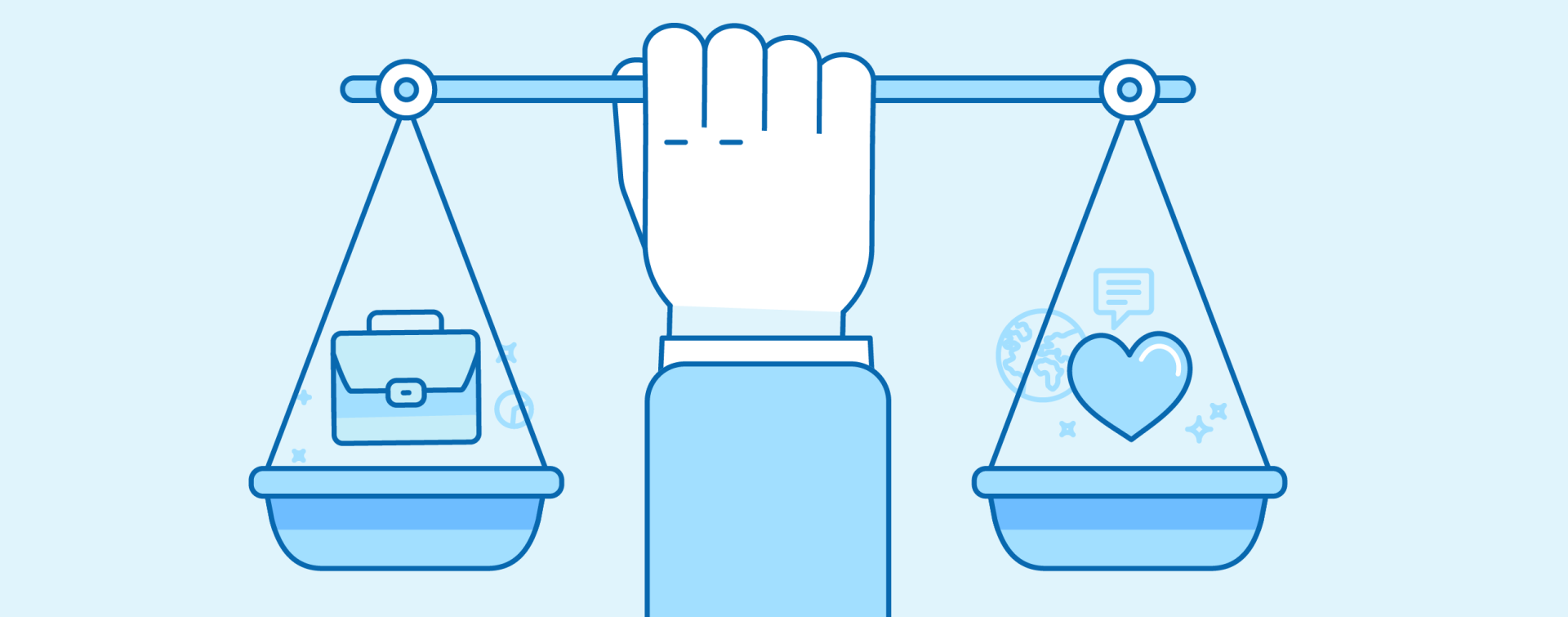Key Takeaways:
- The older generational cohorts tend to be happier with their work and life balance, with 77% of Baby Boomers happy compared to 50% of Gen Zers.
- Gen Zers are the likeliest to work on-site, while nearly half of Millennials, Gen Xers and Baby Boomers are still working from home.
- Regardless of age, the majority of respondents perceive the ability to work from home as beneficial to the balance between their professional and personal lives.
- Only 10% of respondents said workplace stress did not affect their personal life. The most popular de-stressors include watching TV and spending time with family.
- Baby Boomers and Millennials are more willing to trade pay for schedule flexibility, while Gen Xers and Gen Zers are less willing to do so.
Whatever side you’re on in the TGIF versus TGIM debate, there’s no denying that striving for a balance between work and your personal life is essential in maintaining a healthy life. Granted, many aspects can contribute to a perceived work and life balance — from the type of work and hours to stress levels and even sleep quality.
So, to find out where Americans of all ages stood, we conducted a nationwide survey on work and life balance. Specifically, we asked 2,006 respondents questions about their work status, perceived stress levels, and other work and lifestyle details.
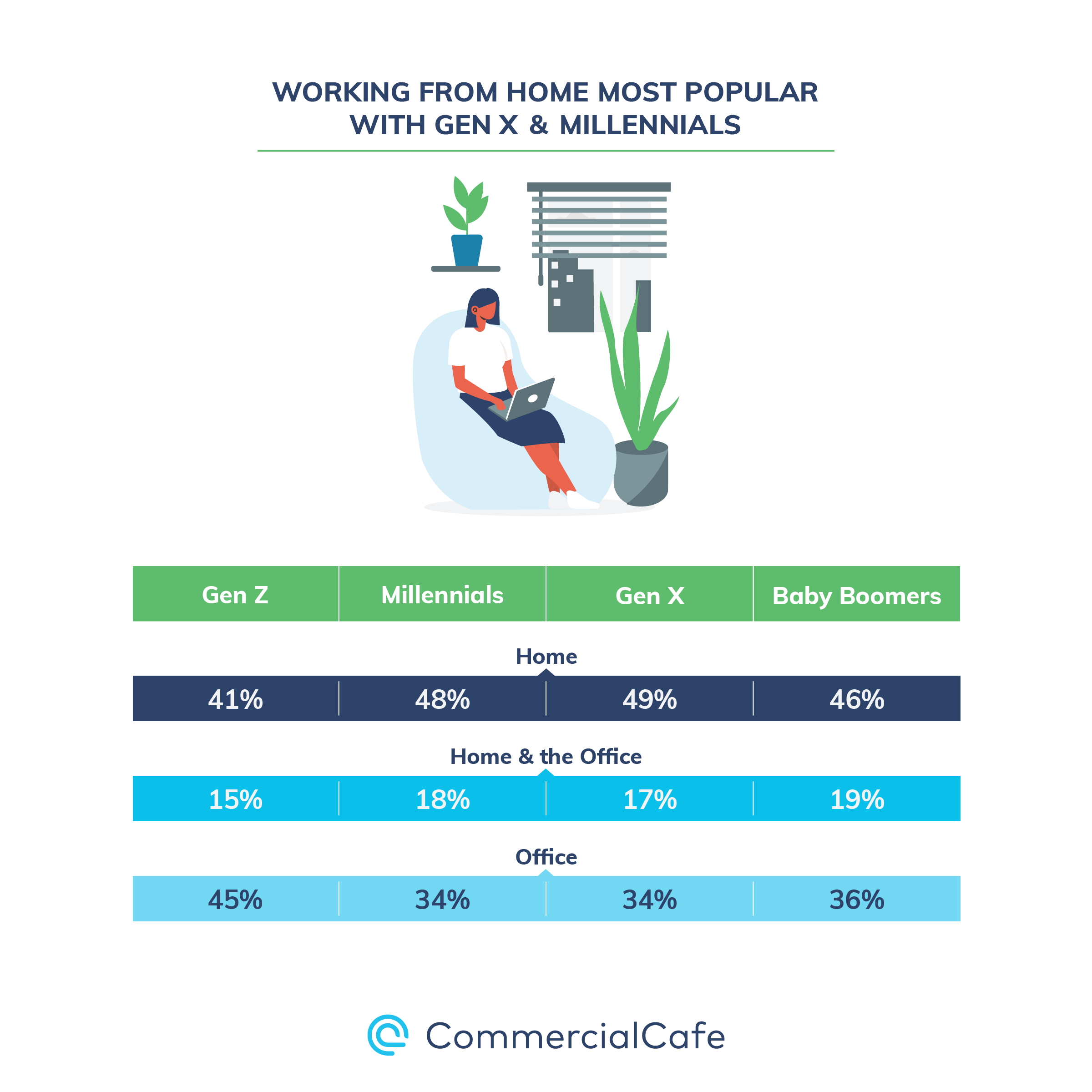 As our previous work/life balance survey outlined, the pandemic had a considerable effect on transforming how we work. Notably, more than two years since the pandemic was first declared, 46% of respondents are still working from home, with Gen Xers being most likely to telecommute (49%), and Gen Zers being the least likely (41%). Hybrid work models were also represented, with approximately 17% of respondents alternating between working remotely and on-site.
As our previous work/life balance survey outlined, the pandemic had a considerable effect on transforming how we work. Notably, more than two years since the pandemic was first declared, 46% of respondents are still working from home, with Gen Xers being most likely to telecommute (49%), and Gen Zers being the least likely (41%). Hybrid work models were also represented, with approximately 17% of respondents alternating between working remotely and on-site.
On the other hand, as many as 45% of Gen Zers who responded to our survey said they worked from the office — a considerably larger percentage than any other cohort. Then again, Gen Zers are also more likely to hold entry-level jobs that require either more hands-on training or physical presence.
Younger Generations Struggle the Most With Work and Life Balance
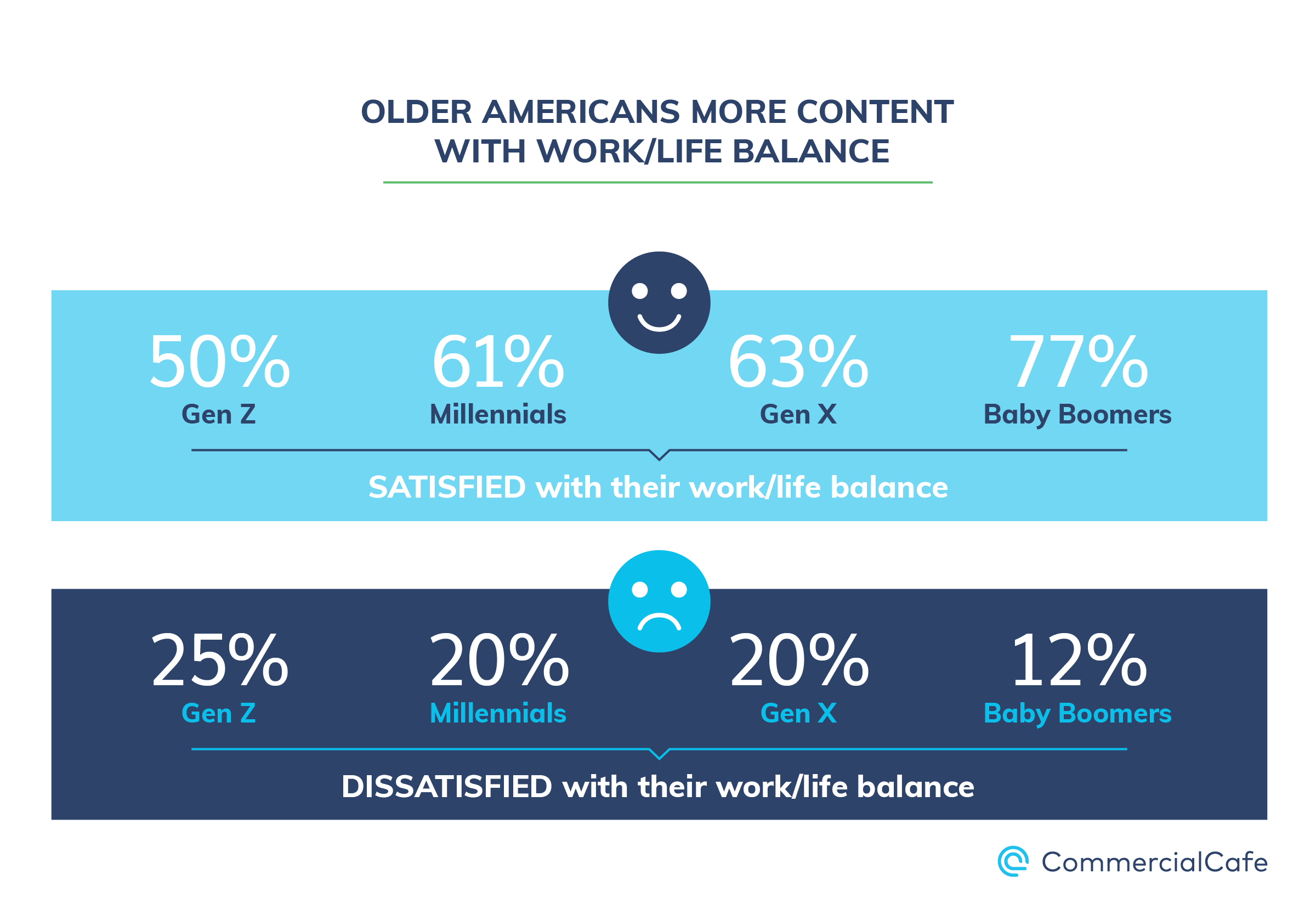 Generally, the older the respondent, the more content they were with their work and life balance. For example, while half of Gen Zers were satisfied with the separation between their work and personal life, more than three-quarters of Baby Boomers were happy in this regard. At the same time, just one-quarter of Gen Zers said they were unhappy with their work and life balance, with smaller shares of the older generations answering similarly.
Generally, the older the respondent, the more content they were with their work and life balance. For example, while half of Gen Zers were satisfied with the separation between their work and personal life, more than three-quarters of Baby Boomers were happy in this regard. At the same time, just one-quarter of Gen Zers said they were unhappy with their work and life balance, with smaller shares of the older generations answering similarly.
One evolution worth noting is the fact that, according to our previous study, only 45% of Gen Zers were satisfied with how they juggled home and office life. Essentially, older Zoomers may have become more accustomed to their role or company or have otherwise learned how to balance work and home life more efficiently.
Meanwhile, fewer Millennials and Gen Xers — 61% and 63%, respectively, compared to 73% and 68% last year — were happy about the balance between their private life and their job. However, their perception could be affected by a variety of factors, such as economic conditions and shifting regulations with childcare and schools which may not have affected Gen Z work/life balance as much.
Gen Z Work/Life Balance Was Most Affected by the Pandemic
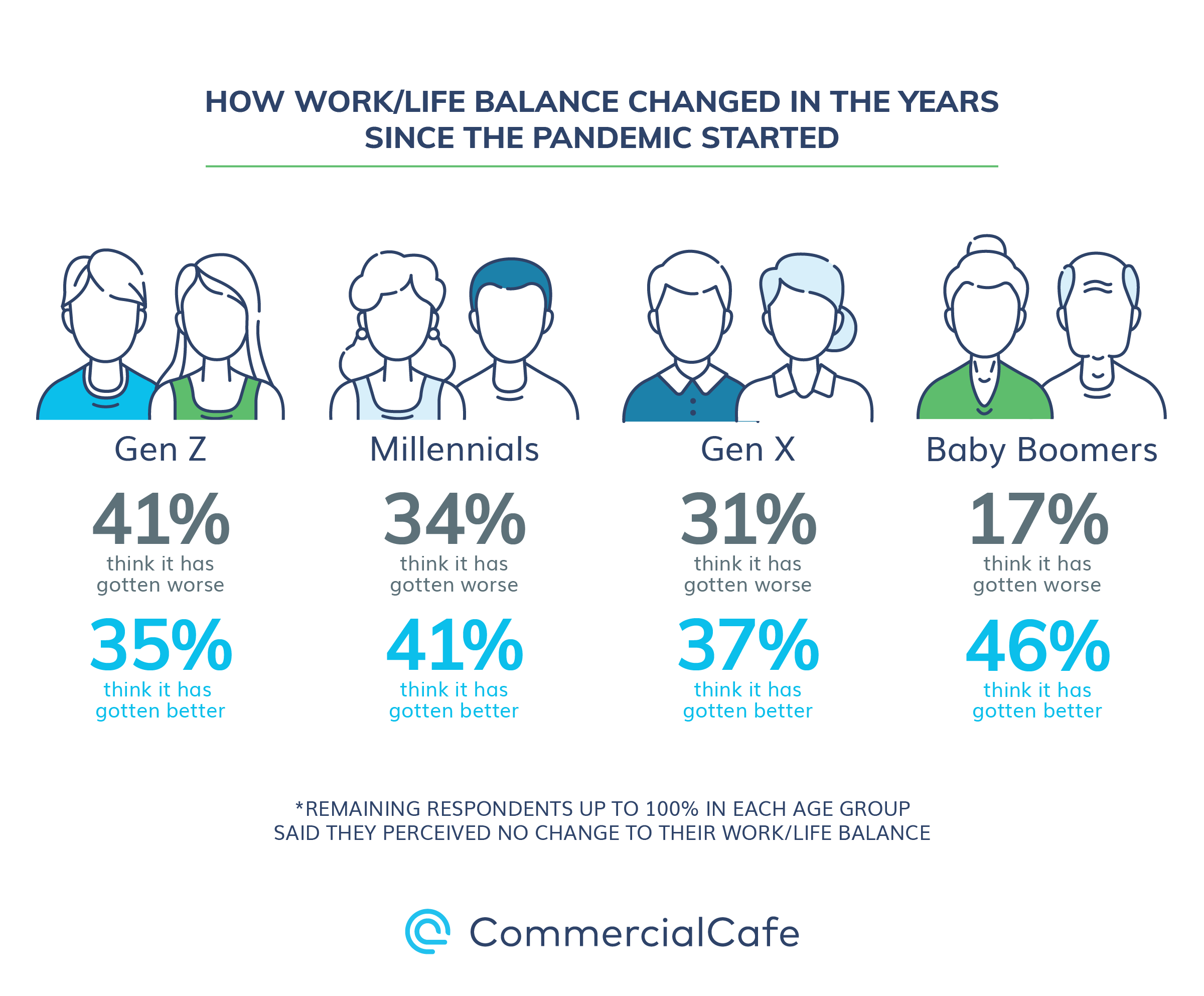 Notably, as the adoption of remote and hybrid models transforms work, the balance between our professional and personal lives is also undergoing changes.
Notably, as the adoption of remote and hybrid models transforms work, the balance between our professional and personal lives is also undergoing changes.
For instance, when asked how their work and life balance had changed since the pandemic began, 41% of Gen Zers said that it had gotten worse, while 35% said it had gotten better and the rest reported no change at all. Of course, a significant number of Zoomers just got their first job in the past few years, which may have influenced their perception of the recent changes to the work/life balance of Gen Z.
As many mental health experts have already underlined, working from home isn’t all roses. While productivity can increase short-term as employees enjoy not having to deal with long commutes and enjoy more time at home, it can also quickly rebound when other factors come into play, such as feelings of isolation and other mental health problems, as well as distractions that are not normally present in the office. As such, the most high-demand office markets in the U.S. still drive demand as many companies double down on hybrid work models, allowing for flexibility while also using the office as a hub.
On the opposite end of the spectrum, only 17% of Baby Boomers felt that the pandemic and the subsequent changes it brought negatively affected their work and life balance, while 46% of the cohort felt an improvement in that regard. The remainder perceived no changes.
Finally, the age groups situated in the middle were split when it came to the recent evolution of their work and life balance: While only 22% of Millennials surveyed last year felt as though their work and life balance had deteriorated during the pandemic, that figure climbed to 34% this year. Similarly, the proportion of Gen Xers who were negatively affected grew from 24% in 2021 to 31% in 2022 — indicating that the pandemic may have negatively affected the lives of middle-aged workers in other ways.
Remote Work Benefits Work and Life Balance of All Generations
While opinions were split on the overall effect of the pandemic on the balance between work and play, one aspect that all cohorts agreed on was the benefit of remote work. Of those we surveyed, 77% of Gen Xers and 72% of Millennials said that the ability to telecommute helped their work and life balance at least to some degree. Meanwhile, 11% of Gen Zers and 13% of Baby Boomers reported that remote work had not helped their work and life balance in any way.
Millennials & Baby Boomers Would Trade Salary for Flexibility, While Gen Z & Gen X Value Pay More
Baby Boomers and Millennials are the most willing to trade pay for flexibility in terms of schedule, whereas Gen Zers — a generation currently making its way into the job market or working entry-level jobs — are the least willing to make that trade.
In fact, among respondents employed full-time, Gen Zers reported the second-highest number of work hours per week, on average (44.5 hours), following only Baby Boomers (44.8 hours). Millennials had the lowest average (43.9 hours). To that end, younger people trying to save money or older workers nearing retirement may be more focused on maximizing their earnings, while middle-aged workers may be more willing to make compromises in the workplace in exchange for more breathing room in their personal lives.
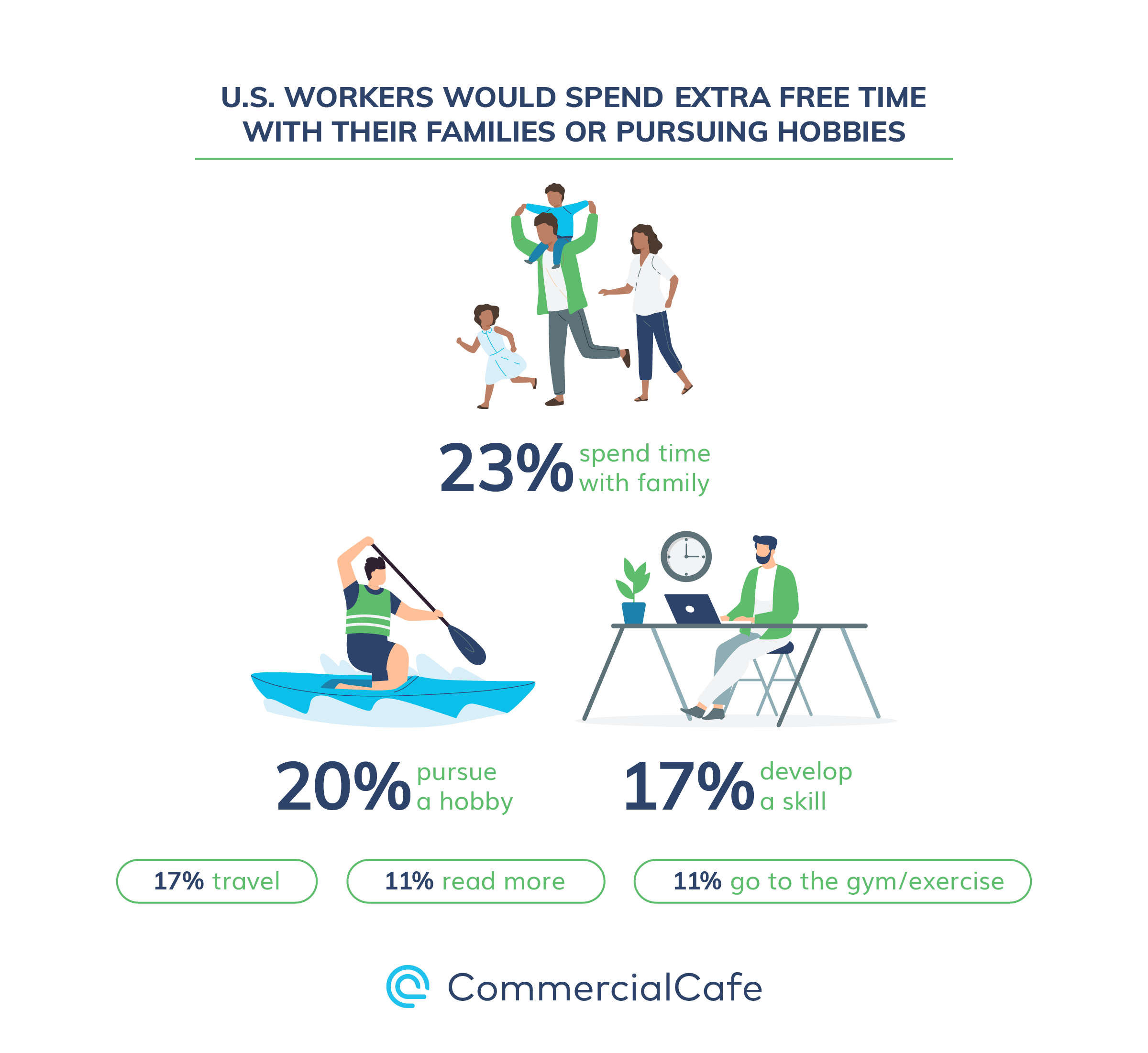 Based on our survey, if they had more time off, most Americans would devote it to their families or personal interests. In fact, 23% of all respondents would spend any extra free time with their family, while 20% would devote more attention to a hobby.
Based on our survey, if they had more time off, most Americans would devote it to their families or personal interests. In fact, 23% of all respondents would spend any extra free time with their family, while 20% would devote more attention to a hobby.
The next most popular choices were traveling or developing new skills, with approximately 17% of respondents choosing these options. In last year’s survey, pursuing hobbies was the most popular choice, by far (29%), while spending time with one’s family came in second. Clearly, the pandemic seems to have shifted our priorities for free time allocation, making time spent with loved ones more important than before.
Baby Boomers Least-Stressed Generation, TV Most Popular De-Stressor
This year’s survey also revealed that workplace stress tends to affect the younger generations to a greater extent. For example, 19% of Zoomers, 14% of Millennials and 13% of Gen Xers said their workplace stressed them a lot, whereas only 9% of Baby Boomers answered the same.
However, stress levels were perceived as higher across the board, with 41% of all respondents reporting “some” workplace stress, compared to approximately 36% of last year’s respondents. Conversely, only 10% of this year’s survey respondents said that stress from their profession does not affect their personal life in any way, versus 13% of respondents last year.
What’s more, the hustle and bustle of modern life that leads to chronic stress is also evidenced by the amount of time that Americans dedicate to lunch: Less than one-third of respondents said they take between 30 and 60 minutes for lunch, while almost half said they have 15 to 30 minutes for their lunch break and 17% reported having less than 15 minutes to eat their lunch.
We asked Diane Gayeski, Ph.D. — a leading researcher in organizational performance, generational differences and workplace communication and Professor of Strategic Communication at Ithaca College — to weigh in on the reason behind the generational disparity in perceived workplace stress. Here’s what she had to say:
“In general, younger workers tend to experience more stress because they are still getting established in their careers, trying to pay off student loans, find housing, establish new personal and professional relationships – all of which was made much more difficult because of COVID and in general either having to go to work in less safe conditions or working from isolation in a small residence. On the other hand, Boomers likely had comfortable places to live and work and the remote work removed the stress of commuting and interruptions in the office.
For Gen Z, working from home meant not having the opportunity to informally observe others at work, build social and mentoring relationships, understand the culture, and get out of a little apartment. For them, getting “face time” with others helps in their promotability. Older workers are already established and may not require as much socialization at work, as they likely already have a family and spouse or other friends, and they might have been happy to be able enjoy more time in their homes.”
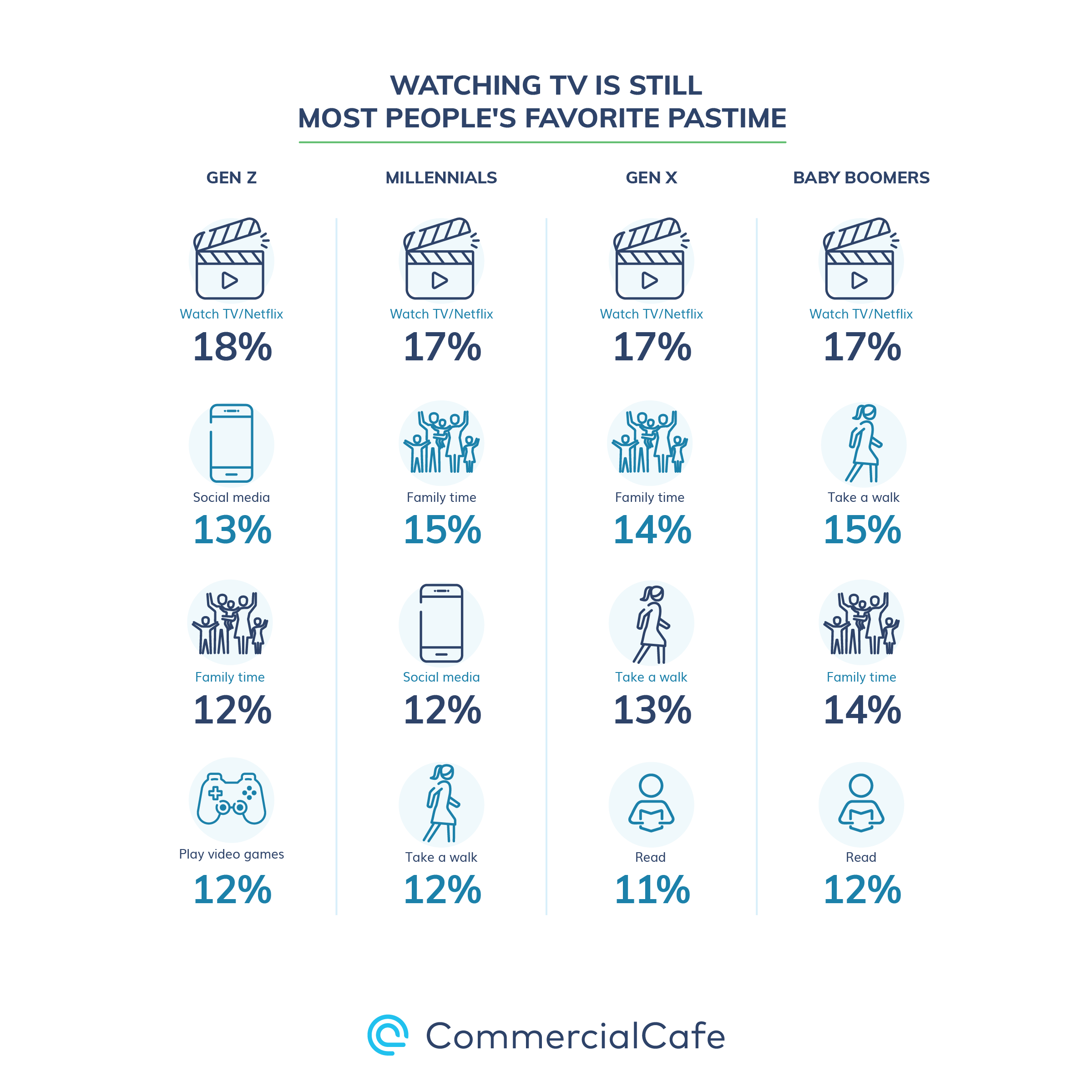 In terms of de-stressing, watching favorite TV shows — whether on cable or Netflix — is still America’s go-to pastime, with between 17% and 18% of respondents across all four generations choosing this as their preferred method to relax. Otherwise, Gen Zers and Millennials gravitated toward engaging in social media and spending time with their family as their next-favorite activities for dealing with stress, while Gen Xers and Baby Boomers preferred family time and going on walks. Reading also made an appearance as the fourth-most popular activity for Gen Xers and Boomers.
In terms of de-stressing, watching favorite TV shows — whether on cable or Netflix — is still America’s go-to pastime, with between 17% and 18% of respondents across all four generations choosing this as their preferred method to relax. Otherwise, Gen Zers and Millennials gravitated toward engaging in social media and spending time with their family as their next-favorite activities for dealing with stress, while Gen Xers and Baby Boomers preferred family time and going on walks. Reading also made an appearance as the fourth-most popular activity for Gen Xers and Boomers.
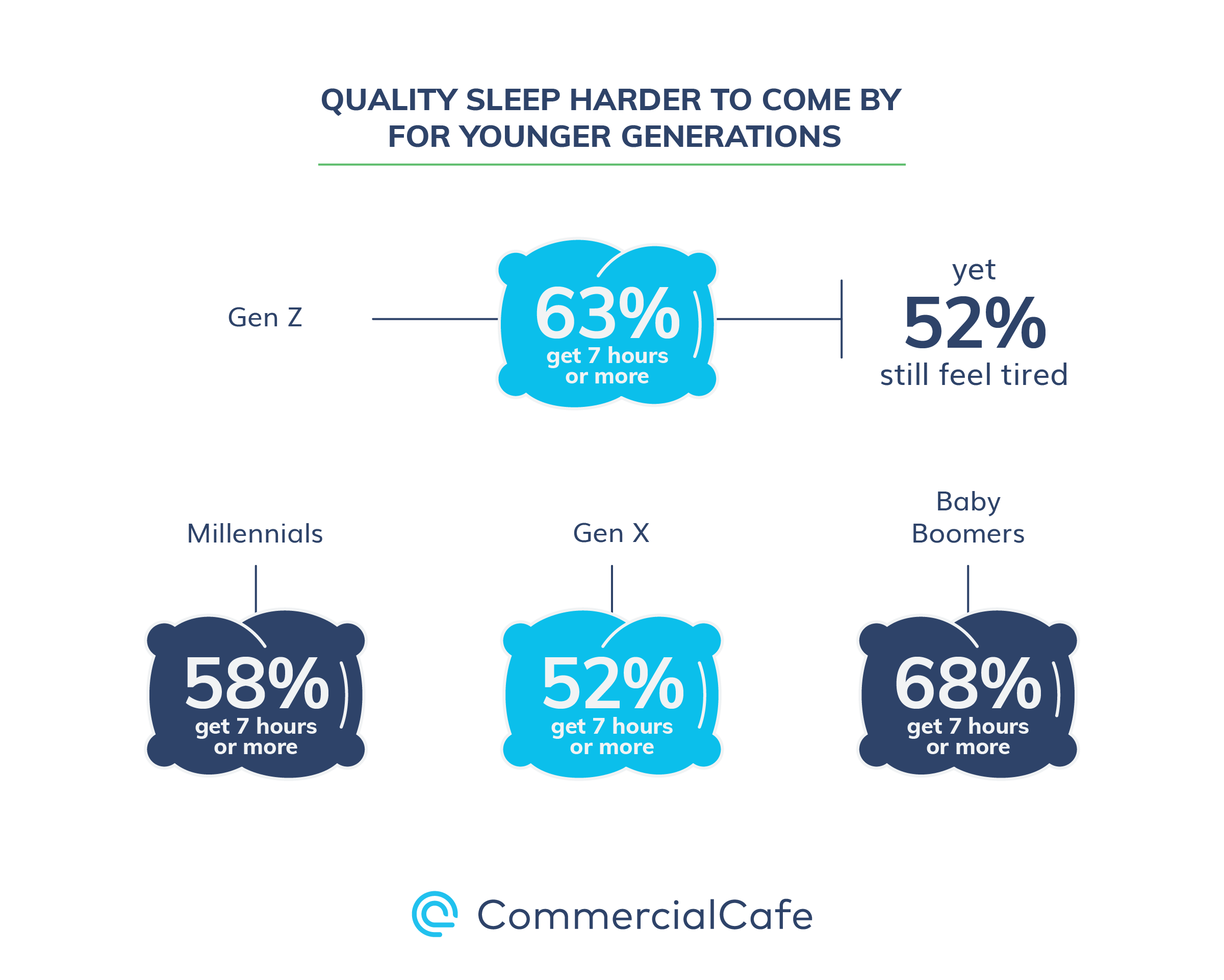 Notably, one of the reasons younger generations may feel like their work and life balance is suffering is due to a lack of quality sleep: Just more than half of Gen Xers surveyed said they got seven or more hours of sleep per night — the amount recommended by doctors for a balanced life. They were joined by 58% of Millennials and 63% of Gen Zers. Even so, around 40% of Millennials and Gen Xers, as well as more than half of Gen Zers, said they still felt tired when they woke up.
Notably, one of the reasons younger generations may feel like their work and life balance is suffering is due to a lack of quality sleep: Just more than half of Gen Xers surveyed said they got seven or more hours of sleep per night — the amount recommended by doctors for a balanced life. They were joined by 58% of Millennials and 63% of Gen Zers. Even so, around 40% of Millennials and Gen Xers, as well as more than half of Gen Zers, said they still felt tired when they woke up.
This represents a considerable drop in sleep hours compared to our previous survey, in which a higher percentage of Zoomers, Millennials and Gen Xers said they got seven or more hours of sleep per night. Not getting enough sleep is one of the main enablers of workplace stress and can negatively affect energy levels and moods in the long term.
Among all of our respondents, 53% said they worked full-time, while 22% said they were currently freelancing and a further 22% were working part-time. Baby Boomers were the most likely to hold a full-time job, while part-time work was (unsurprisingly) the most popular with Gen Zers.
Finally, freelancing is currently the most popular with Millennials and Gen Xers (25% and 26%, respectively). In addition to bringing the wide adoption of working from home, the pandemic also seems to have increased the popularity of freelancing, thereby allowing for more flexibility, which middle-aged respondents value.
Freelancers stand to benefit the most from the popularization of the coworking trend. Coworking offices grant access by the hour, day, or longer-term to all the amenities expected from a modern office while allowing you to work when you want, where you want. Check out some of the most vibrant coworking markets in the U.S. and the wide variety of designs, amenities and plans they offer:
Methodology
Our survey included 2,006 respondents, 25% of which were Gen Z; 26% Millennials; 26% Gen X; and 23% Baby Boomers. All respondents were older than 18. Age groups were defined as follows:
- Generation Z: Less than 25 years old
- Millennials: 25 to 40 years old
- Generation X: 41 to 55 years old
- Baby Boomers: 56 years old and older
Survey responses were collected using Clickworker and Amazon Mechanical Turk. The survey has a 5% margin of error and a 95% confidence level.

